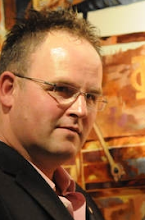- As written by T.Philp and published in the summer 2012 edition of the King Tapestry
On
the ziggurat of white wine greatness there are many plateaus. The top
spot however is reserved for a matter of personal preference – and for many,
that element of vinous superiority is none other than Chardonnay. I rest with
one foot firmly planted in this camp, while the other travels the world making
regularly stops on the banks of the Mosel River
Riesling
is the ‘other’ white grape; it has been for centuries and likely always will
be. Cut from a different cloth than the white knight of Burgundy
Riesling
is successfully grown throughout the world, but unlike many of the warmer
climate varieties, these vines excel in cooler growing regions. The banks of the Mosel in Germany
and France ’s great Alsace lead the world in quality Riesling (though
differing styles) while honourable mentions go to several other regions including
Australia and our very own Niagara peninsula.
The focus today however, is on a plot of land that experts of the vine
unanimously consider the source of the purest and most expressive Riesling in
the world.
Before
I introduce the wine, let’s discuss a few theoretical points; for greatness usually
comes at the expense of simplicity:
German
QmP (Qualitätswein mit Prädikat) standards dictate the classification of the
wine based on the natural sugar content (brix level) of the grapes at harvest. Logically,
the longer the grapes are allowed to ripen, the higher the brix level. At this level, chaptalization (the addition
of sugar) is not allowed and the resultant wines can range from bone dry to the
ultra-sweet nectar of the Gods known as Beerenauslese.
Listed
below by increasing levels of brix are the various grades of German QmP wine:
Kabinett ¦ Spatlese ¦ Auslese ¦ Beerenauslese ¦ Trockenbeerenauslese
*
It is important to note that higher brix does not necessarily dictate a sweeter
wine. The first three levels of the QmP,
if allowed, will ferment until fully dry. Ascending through the levels, German
Riesling becomes richer in both flavour and intensity.
The Legend of the Doctor vineyard
Just
as Bordeaux has its First Growths and Burgundy Mosel Valley village of Berncastel
The
entire Doctor vineyard measures only 8.1 acres in total and is comprised of century
old vines that existed before the devastating phylloxeria louse decimated nearly
every grape vine in Europe at the end of the
19th century. The vines have
a root structure that extends over 10 metres below the surface of the vineyard which
is said to be most expensive agricultural land in Germany
‘The Doktor’ has stained my mind on a few occasions now, at various levels of the QmP, and most recently via a bottle of '09 Kabinett.
 If
you thought the name was a mouthful, you really ought to try the wine. The deep yellow colour might cause one to mistake
this for a much older bottle. Aromas of peach leap from the glass to
reveal notes of spiced honey, apricot, and hints of almond extract – Initial
impressions have me questioning the Kabinett (first harvest) status – and
tasted blind I would likely label this a Spatlese wine; evidently all Kabinett
is not created equal. Incidentally, the origin of the term kabinett dates
back to when German winemakers held on to a few of their best bottle for
personal consumption. These prized bottles were stored in the winemakers
own ‘cabinet’. On the palate, this wine redefines the definition of
balance. Nothing is out of place: sweetness, acidity, and body all
resonate in luxurious harmony with no one note projecting its tone above the
others. Sensations of ripe red apple, juicy
If
you thought the name was a mouthful, you really ought to try the wine. The deep yellow colour might cause one to mistake
this for a much older bottle. Aromas of peach leap from the glass to
reveal notes of spiced honey, apricot, and hints of almond extract – Initial
impressions have me questioning the Kabinett (first harvest) status – and
tasted blind I would likely label this a Spatlese wine; evidently all Kabinett
is not created equal. Incidentally, the origin of the term kabinett dates
back to when German winemakers held on to a few of their best bottle for
personal consumption. These prized bottles were stored in the winemakers
own ‘cabinet’. On the palate, this wine redefines the definition of
balance. Nothing is out of place: sweetness, acidity, and body all
resonate in luxurious harmony with no one note projecting its tone above the
others. Sensations of ripe red apple, juicy
A
wine like this will change the way you view the sea of Riesling



Nice post. Thank you for taking the time to publish this information very informative; so happy to be given a privilege to post a comment here.
ReplyDeleteaissa
www.joeydavila.net
I like your post a lot! You should write some more on this!Great job coming with such terrific post!
ReplyDeletealchemist
www.inspgift.com
ReplyDeleteYou should be applauded for providing the articles and making the effort to provide the useful information you do. Keep up the great work & happy blogging!
Zea
Taking risk is not bad as long as you know that you can handle it right and make sure you don't regret at the end. Visit my site for more information and thanks for your wonderful article it did helped me a lot.
ReplyDeletetriciajoy.com
www.triciajoy.com